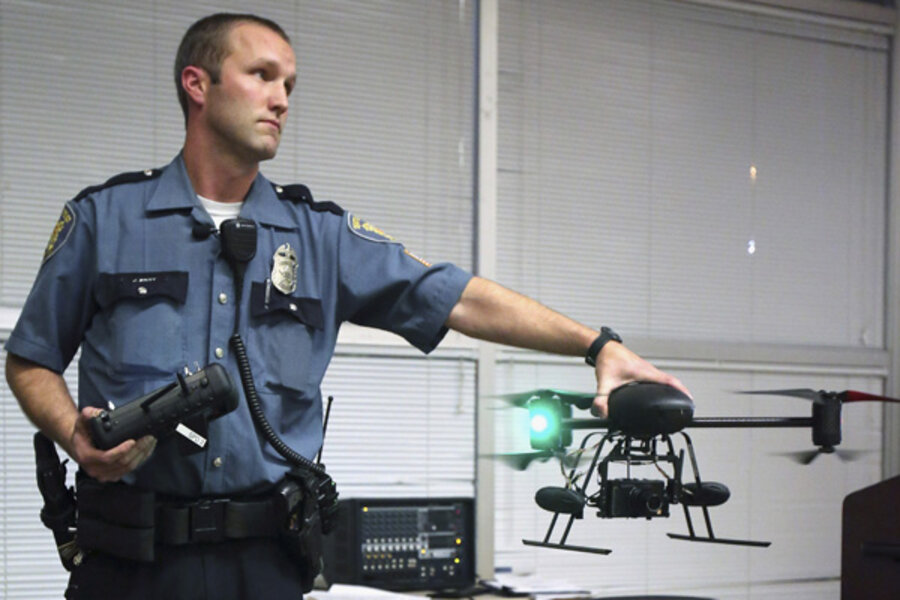Drones are cheaper and more powerful. In US, that's a problem, lawmakers told
Loading...
| Washington
With much of Capitol Hill riveted by IRS audits, AP phone records, and Benghazi e-mails, top US scholars gathered to testify in a little-watched congressional hearing Friday about the growing threat the use of drones in US airspace may pose to civil liberties.
They warned that unmanned aircraft carrying cameras raise the specter of a “significant new avenue for surveillance of American life,” as Christopher Calabrese, legislative counsel for the American Civil Liberties Union, characterized it for lawmakers Friday.
“Many Americans are familiar with these aircraft – commonly called drones – because of their use overseas in places like Afghanistan and Yemen. But drones are coming to America,” he said.
Recent legislation requires the Federal Aviation Administration to “develop a comprehensive plan to safely accelerate the integration of civil unmanned aircraft systems into the national airspace system.”
At the same time, the technology “is quickly becoming cheaper and more powerful,” which has accelerated interest in deploying drones among police departments, Mr. Calabrese pointed out in testimony before the House Judiciary Subcommittee on Crime, Terrorism, Homeland Security, and Investigations.
The problem, he warned, is that “our privacy laws are not strong enough to ensure that the new technology will be used responsibly and consistently with constitutional values.”
So as drones proliferate, so too does the “specter of routine aerial surveillance in American life,” he argued, “a development that would profoundly change the character of public life in the United States.”
Is it really that dire, though, lawmakers wondered? After all, police departments in major metropolitan areas routinely use manned helicopters to search for criminals on the run, launch rescue operations, and fight wildfires.
What’s more, these manned aircraft are routinely equipped with far more powerful cameras than domestically-used drones.
“Drones can be employed in an endless variety of civilian applications, the overwhelming majority of them beneficial,” noted John Villasenor, a fellow in government studies at the Center for Technology Innovation at the Brookings Institution, in testimony before the committee.
Plus, in a time of fiscal constraint, drones are cheaper. For instance, after trying for months to cobble together enough money to buy a $25 million turbine engine helicopter, the Grand Forks, N.D., police department ultimately turned to drones as a lower-cost alternative.
But the low-cost of drones may also be part of the problem, Calabrese argued. In the past, because manned aircraft are costly to buy, operate, and maintain, “this expense has always imposed a natural limit on the government’s aerial surveillance capability,” he said.
Now, the prospect of cheap, small drones equipped with video surveillance “threatens to eradicate existing practical limits on aerial monitoring and allow for pervasive surveillance, police fishing expeditions, and abusive use of these tools in a way that could eventually eliminate the privacy Americans have traditionally enjoyed in their movements and activities,” he warned.
“Now that surveillance can be carried out by unmanned aircraft, this natural limit is eroding.”







